
Semi-Precision Root Anchors For Partial Dentures
This case series presents a clinical solution to removable partial denture challenges through use of semi-precision attachments.
Even with the rate of edentulism declining and various fixed options available to replace missing teeth, removable complete and partial dentures remain a common treatment modality in restorative practice.1–3 This case series will present a treatment option using semi-precision attachments to save an existing partial denture when an abutment tooth is compromised. These attachments can also be used when planning a new partial or complete denture prosthesis.2– 6
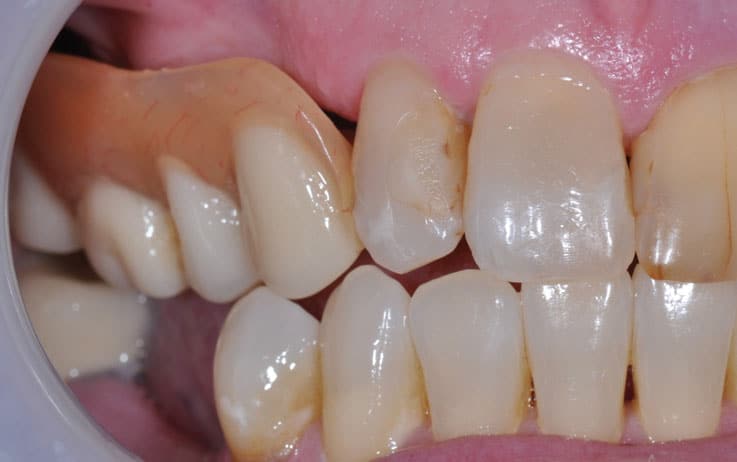
When there is severe decay or fracture of an abutment tooth, practitioners and patients are left to choose between a post and crown or extraction. One option is to extract the tooth and place an implant, but sometimes this is not the best approach. Although implant treatment has high success rates, some patients are not candidates for this restorative solution. A few of the contraindications to implant placement described in the literature include a history of radiation treatment, diabetes, bisphosphonate use or smoking.7 In other cases, patients may not choose implant therapy due to fear of the procedure or psychological impact of losing their teeth. Others are unwilling to commit to the treatment time and cost.2,5
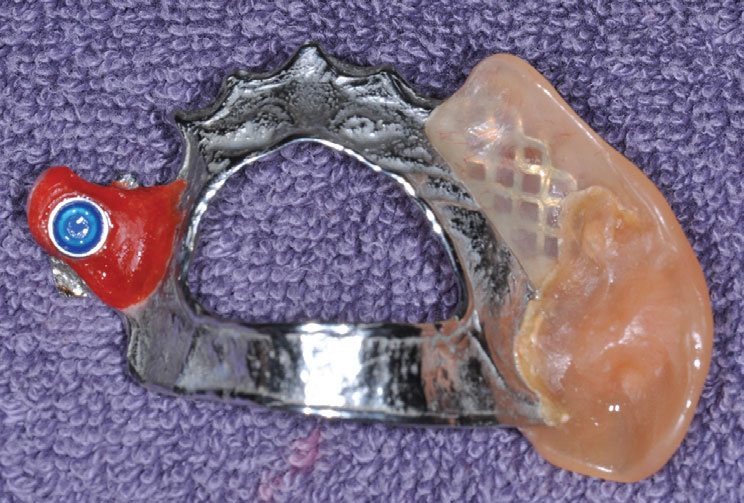
UTILIZE THE EXISTING ROOT
In these situations, another option is to use the compromised tooth as an overdenture abutment by placing a semi-precision attachment on the existing tooth root.4,8,9 The advantages of this approach over extraction are similar to those of using the same attachment on an implant — but without the added cost and treatment time. These include increased prosthesis retention, stability, bite force and chewing efficiency.2,3,5,6,9 Retaining roots will also reduce potential issues with bone resorption.8,10,11

Additionally, having a semi-precision attachment instead of an edentulous saddle area or clasp increases patient satisfaction with esthetics, chewing function, and oral health-related quality of life.2,3,5 Removing the crown portion of the compromised tooth will also instantly improve the crown-to-root ratio.8,11,12 Proprioception is another key advantage of using a root rather than an implant for the attachment, as this clinical solution helps patients more effectively gauge bite force and muscle movement.4,11 As noted, the two cases presented in this article will demonstrate a conservative, efficient, and cost-effective way to save a removable partial denture prosthesis when an abutment tooth is compromised.

This case series explores the use of a root anchor attachment system in two clinical scenarios. The first case uses a root anchor attachment to salvage a removable partial denture where an abutment post, core and crown failed. The second case presents a way to solve the problem of an unesthetic clasp in the anterior and yet still ensure adequate retention.
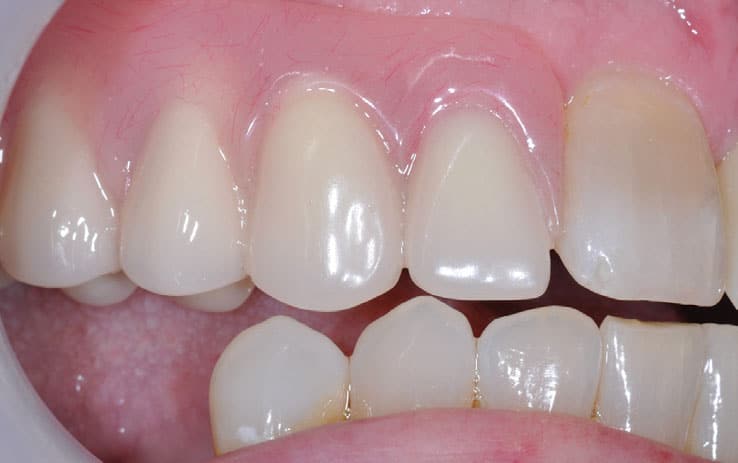
CASE 1
The patient was a 57-year-old female who presented seeking a new partial denture. Her existing partial had been repaired several times and exhibited poor retention (Figure 1).
In fact, there was no retention on the right side. All of the teeth distal to tooth #7 were missing. Tooth #3 had been extracted and added to the partial, while #13 had also been added to the partial. An implant had been placed in the area of #13. The crown on #14 had caries under the margin, and the clasp on it provided the only retention. When the crown on #14 was removed, the tooth was found to be nonrestorable. The challenge was to have this partial serve as the interim until the new partial could be fabricated. Once #14 was extracted, there would be no retention.

The treatment plan was to extract tooth #14 and remove the clasp from the partial, place an attachment device on the implant at #13 and pick up a housing (Figure 2). This allowed the patient to wear the partial as an interim, with similar retention as before the extraction of #14.
For the definitive partial, the plan was to clasp tooth #15 and leave the attachment device on implant #13. Retention on the right side presented a problem, however, as the patient did not want to have a visible clasp. Several options were considered: place a crown on #7 and use either an extracoronal semi-precision attachment or esthetic clasp. She decided on elective root canal therapy, followed by a root anchor attachment on #7.
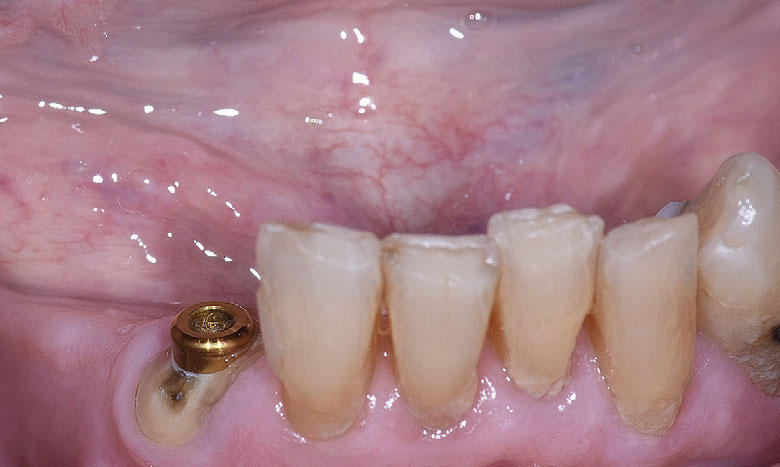
The root canal therapy was completed, and a final impression taken for the new partial denture. The framework was tried in, and a bite record was made with wax on the framework. A wax try-in was done without tooth #7 being set. At delivery, the crown on #7 was removed and the canal was prepared for the root anchored attachment device (Figure 3). Next, the attachment device was cemented. The housings for #13 and #7 were picked up (Figure 4). The result was a partial with good retention and esthetics (Figure 5).

CASE 2
The second patient, a 45-year-old male, presented with a crown and a post and core on tooth #27 (Figure 6). This was the abutment for a partial denture that was less than two years old. The option of redoing the post and core and retrofitting a crown to the partial was considered, but rejected for two reasons. First, the remaining tooth structure was insufficient to create an adequate ferrule. The second reason was the difficultly of retrofitting a crown to a partial. Instead, it was decided to place a root anchor attachment, add a tooth to the partial, and pick up the housing.
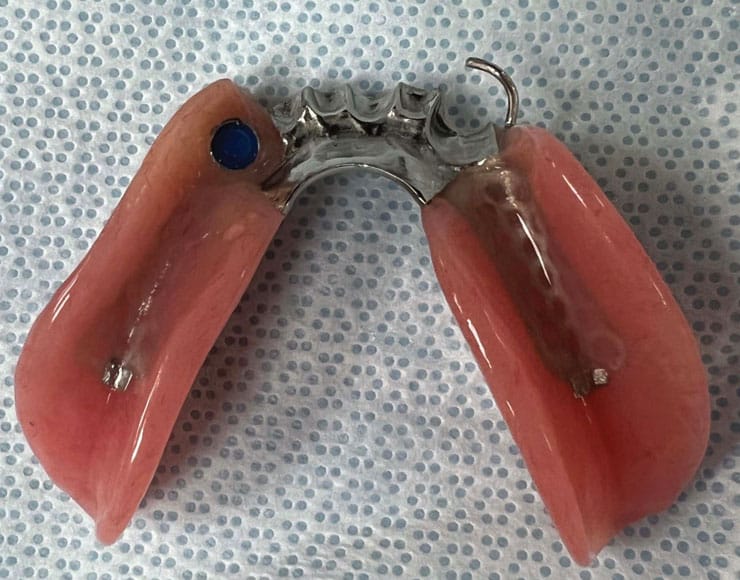
After the canal was prepared, the root anchor attachment was cemented (Figure 7). A pick-up impression was made and sent to the lab for adding tooth #27 to the partial (Figure 8). The original plan was to pick up the housing at delivery, but the lab placed an analog in the impression and added the housing and tooth (Figure 9). At the delivery appointment, the partial was tried in, and the lab-placed housing aligned well. The result was a retentive repaired partial (Figure 10).
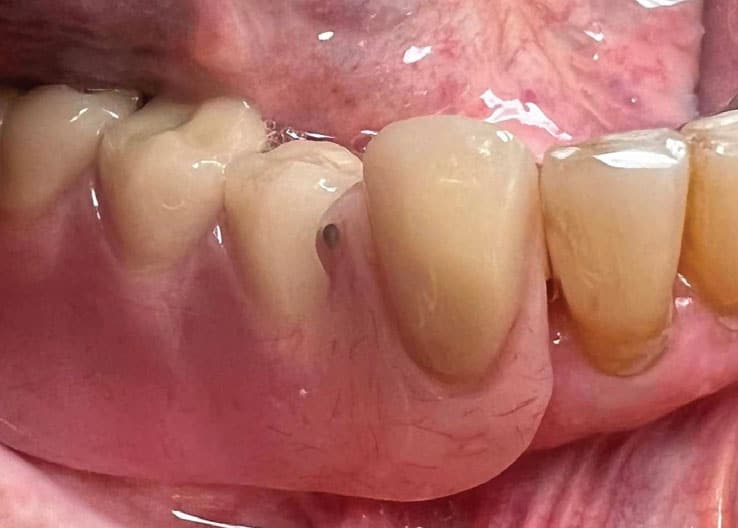
SUMMARY
The cases presented here were completed using a root anchor attachment system that requires the clinician to prepare a space in the root of the tooth before cementing the attachment device directly into the prepared space. As noted, this technique is useful with either partial or complete dentures.
While this is an efficient and inexpensive option, the semi-precision attachment can also be cast into a gold coping instead and cemented in place. Placing semi-precision attachments on tooth roots offers a conservative treatment approach that is faster and less costly than implant placement. Best of all, this option can also be used temporarily until the patient is able to commit to more extensive treatment.
KEY TAKEAWAYS
- Although many restorative options exist, including dental implants, removable complete and partial dentures remain a common treatment modality.1–3
- This case series presents treatment options using semi-precision attachments to save an existing partial denture when an abutment tooth is compromised.
- While extraction followed by placement of an implant is one solution for an abutment tooth that is severely decayed or fractured, patients may either not be suitable candidates, or simply not wish to pursue implant therapy.
- In these situations, another option is to use the compromised tooth as an overdenture abutment by placing a semi-precision attachment on the existing tooth root.4,8,9
- As demonstrated by the cases presented in this article, using a root anchored semi-precision attachment represents a conservative, efficient, and cost-effective way to save a removable partial denture when an abutment tooth is compromised.
- The advantages of the root anchor approach over extraction are similar to those of using the same attachment on an implant — but without the added cost and treatment time.
REFERENCES
- Douglass CE, Watson AJ. Future needs for fixed and removable partial dentures in the United States. J Prosthet Dent. 2002;87:9–14.
- Swelem AA, Abdelnabi MH. Attachment-retained removable prostheses: Patient satisfaction and quality of life assessment. J Prosthet Dent. 2021:125:636–644.
- Zhang H, Ramos Jr. V, Bratos M, Liu PP, He W. Effect of the attachments on clinical outcomes of mandibular distal extension implant-supported removable partial dentures: A systematic review. J Prosthet Dent. July 20, 2021. Epub ahead of print.
- Mericske-Stern R. Overdentures with roots or implants for elderly patients: a comparison. J Prosthet Dent. 1994;72:543–550.
- Peršić S, Kranjči, J, Pavičić DK, Mikić VL, Čelebić A. Treatment outcomes based on patients’ self-reported measures after receiving new clasp or precision attachment-retained removable partial dentures. J Prosthodont. 2017:26:115–122.
- Langer Y, Langer A. Root-retained overdentures: Part I — biomechanical and clinical aspects. J Prosthet Dent. 1991;66:784–789.
- Kullar AS, Miller CS. Are there contraindications for placing dental implants? Dent Clin North Am. 2019:63:345–362.
- Fenton AH. The decade of overdentures: 1970–1980. J Prosthet Dent. 1998;79:31–36.
- Lord JL, Teel S. The overdenture: patient selection, use of copings, and follow-up evaluation. J Prosthet Dent. 1974;32:41–51.
- Crum RJ, Rooney Jr. GE. Alveolar bone loss in overdentures: a 5-year study. J Prosthet Dent. 1978;40:610–613.
- Knoernschild KL, Lefebvre CA, Allen JD. Overdentures and the periodontium. Quintessence Int. 1992:23:405–409.
- Morrow RM, Feldmann EE, Rudd KD, Trovillion HM. Tooth-supported complete dentures: an approach to preventive prosthodontics. J Prosthet Dent. 1969;21:513–522.
From Decisions in Dentistry. January 2023;9(1)18-20.


